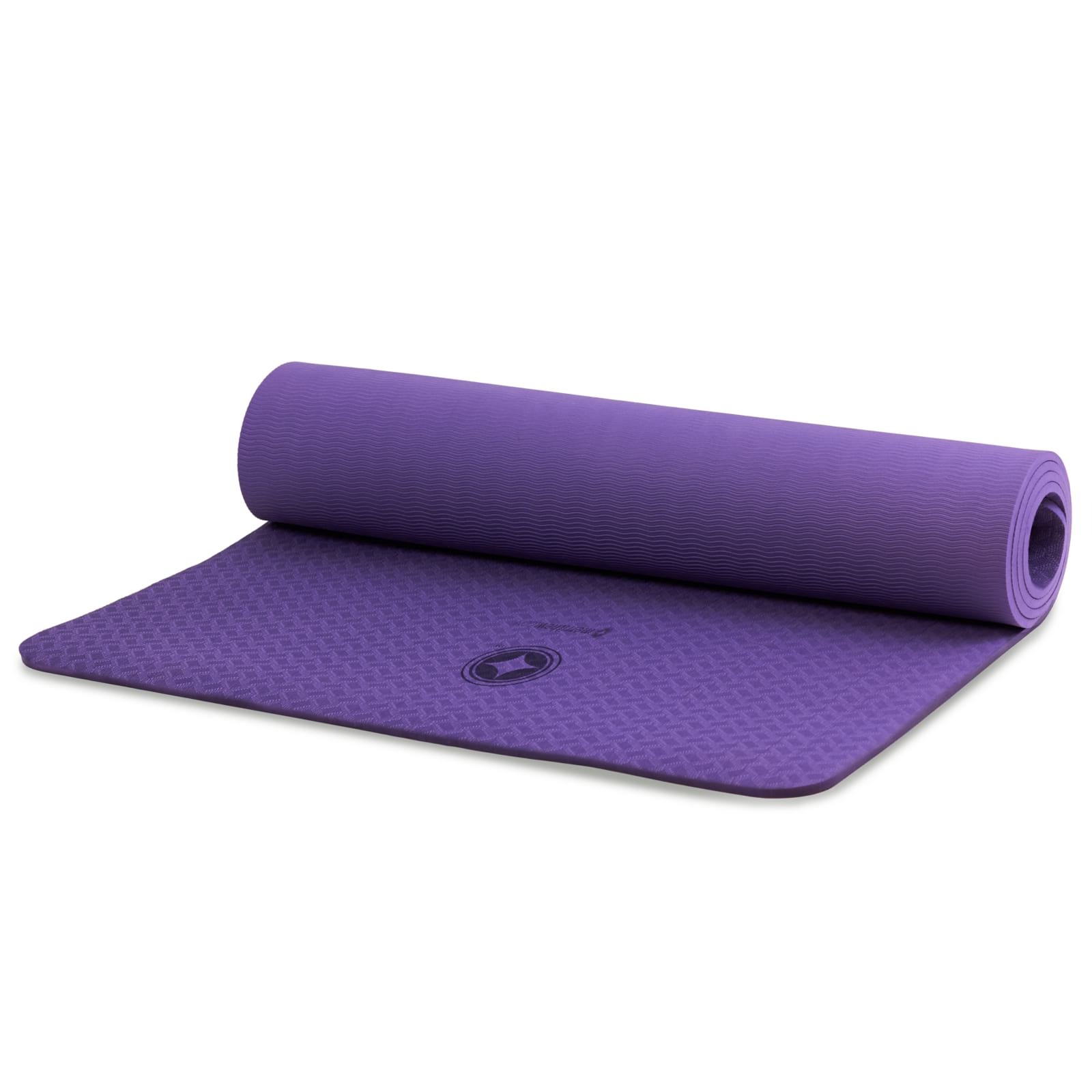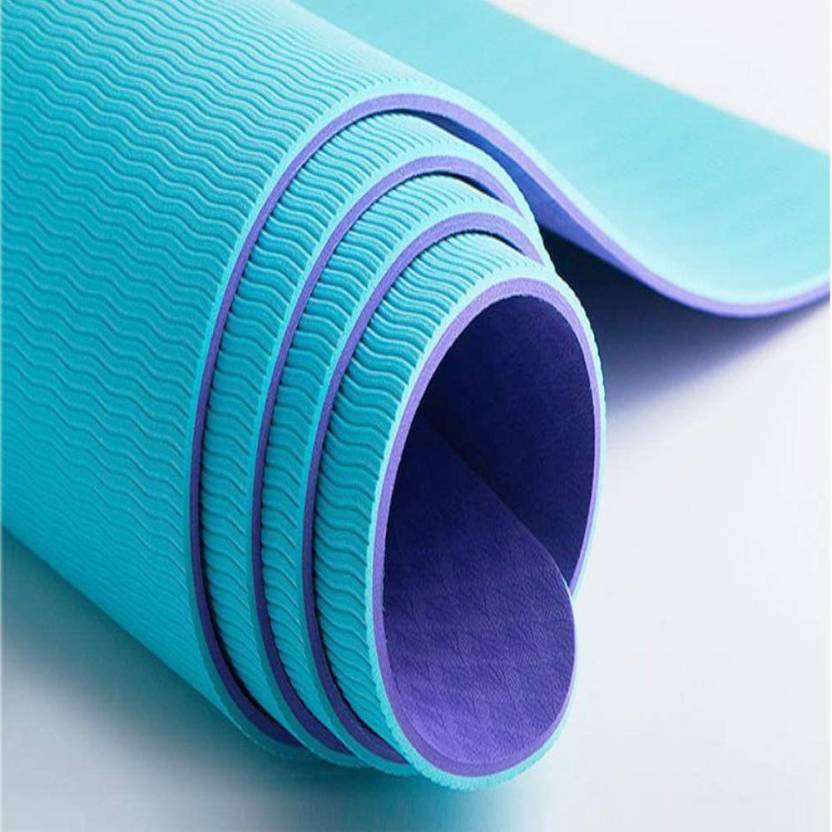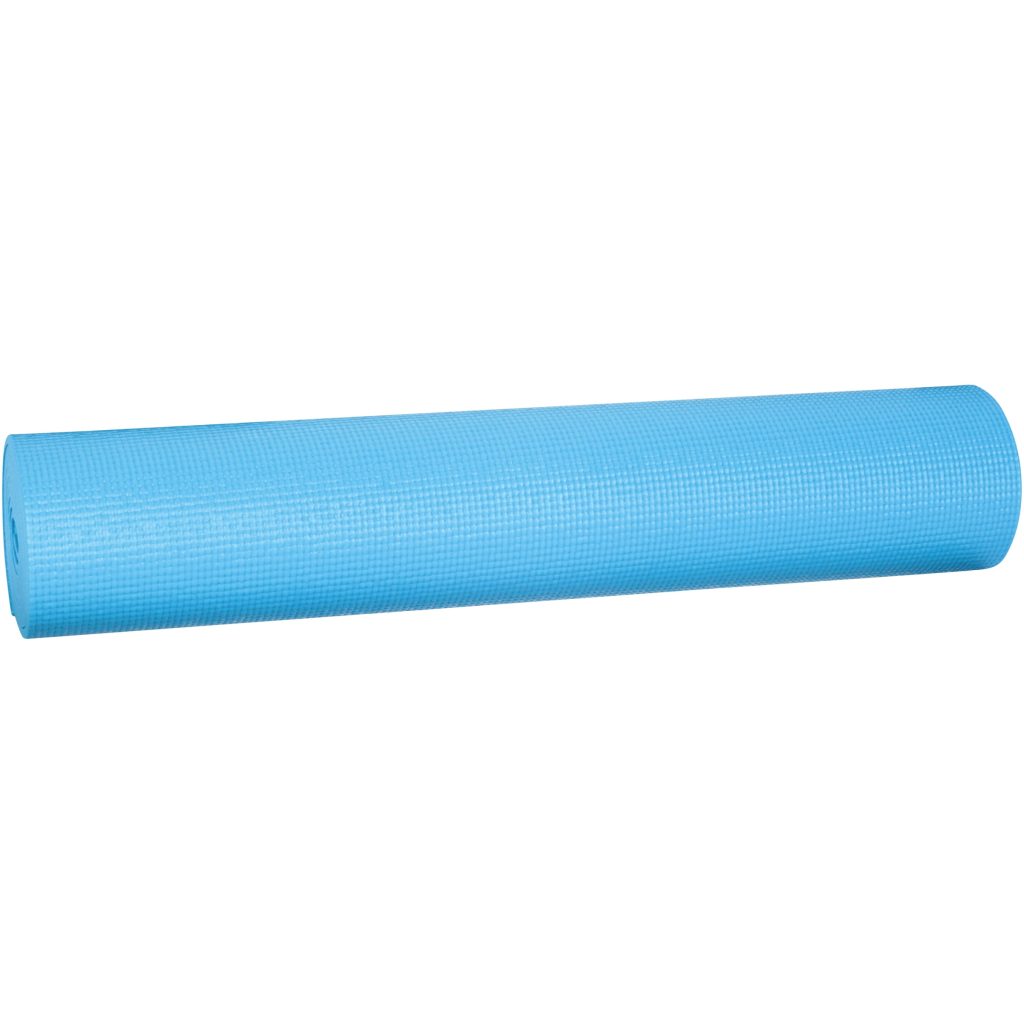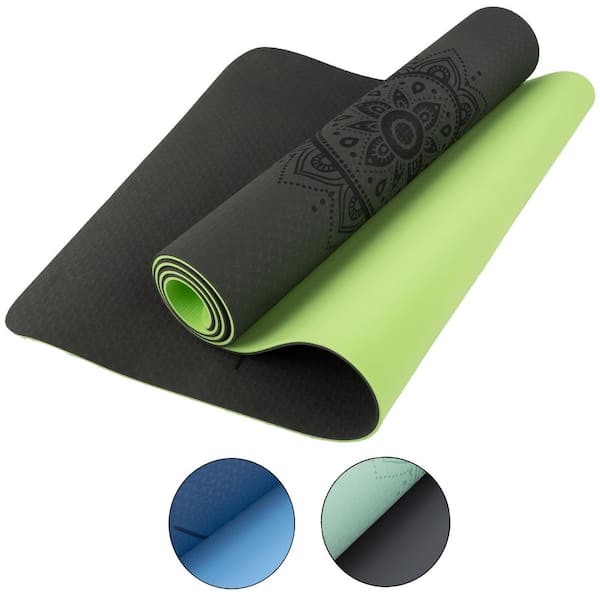How to make your yoga mat less slippery? Yoga is a wonderful practice that has numerous physical and mental health benefits. However, if you find yourself slipping and sliding on your yoga mat during your practice, it can be frustrating and potentially dangerous. Fortunately, there are several simple steps you can take to make your yoga mat less slippery and ensure a more stable and enjoyable practice.

Choose the Right Mat
The first step to making your yoga mat less slippery is to choose the right mat. Not all yoga mats are created equal, and some are designed with more grip than others. Look for a mat that is made from high-quality, non-slip material and has a textured surface. This will help to provide additional traction and prevent slipping during your practice.
Clean Your Mat Regularly
One of the most common causes of a slippery yoga mat is a build-up of sweat, oils, and dirt from regular use. To prevent this, it’s important to clean your mat regularly. You can simply wipe down your mat with a solution of water and mild detergent, or use a yoga mat cleaner for a more thorough clean. Keeping your mat clean will help to maintain its grip and prevent slipping.
Use a Towel or Yoga Blanket
If you find that your mat is still slippery even after cleaning and choosing a high-quality mat, you can use a towel or yoga blanket as a non-slip surface during your practice. Simply lay the towel or blanket over your mat before you begin, and it will provide additional grip and stability. This is a simple and effective solution for those who struggle with slipping on their mat.
Invest in a Grip Spray
Another option for making your yoga mat less slippery is to invest in a grip spray. These sprays are specially designed to enhance the grip of your mat, providing a more stable surface for your practice. Simply spray the product onto your mat, allow it to dry, and enjoy improved traction during your practice. Grip sprays are a convenient and effective solution for those who want to quickly and easily improve the grip of their mat.
Practice Mindful Movements
In addition to the physical solutions mentioned above, practicing mindful movements can also help to reduce slipping on your yoga mat. Pay attention to your posture and alignment, engage your muscles, and distribute your weight evenly on the mat. By being mindful of your movements, you can reduce the likelihood of slipping and sliding during your practice.

What sports are suitable for yoga mats
Yoga mats are a staple in the world of fitness and wellness, primarily associated with the practice of yoga. However, their functionality and versatility are not limited to just yoga. In fact, yoga mats are suitable for a wide range of exercises and workouts, making them an essential accessory for fitness enthusiasts.
The Benefits of Using a Yoga Mat
Before delving into the specific workouts that are ideal for yoga mats, it is important to understand the benefits of using a yoga mat for any form of exercise. Yoga mats provide a cushioned and non-slip surface, which is essential for maintaining stability and balance during workouts. The texture of the mat also provides traction, preventing accidental slips or falls, especially during high-intensity exercises. Additionally, yoga mats are portable and lightweight, making them easy to transport and use in different settings.
Pilates
Pilates is a form of low-impact exercise that focuses on core strength, flexibility, and overall body awareness. It often involves a series of precise movements and poses that require a stable and supportive surface. Yoga mats offer the perfect foundation for practicing Pilates, as they provide the necessary cushioning and grip for executing the movements with precision. The soft surface of the mat also reduces pressure on the body, making it more comfortable to perform Pilates exercises.
Bodyweight Exercises
Bodyweight exercises, such as push-ups, planks, lunges, and squats, are a fundamental component of many workout routines. These exercises require a stable and comfortable surface to perform on, which is where yoga mats come in handy. With their cushioned support and non-slip texture, yoga mats offer an excellent platform for performing bodyweight exercises, allowing for proper form and reducing the risk of injuries. Additionally, yoga mats can make floor exercises more comfortable, particularly for those with sensitive joints.
Stretching and Flexibility Training
Whether it’s static stretching, dynamic stretching, or flexibility-focused workouts, yoga mats are an essential tool for enhancing flexibility and mobility. The soft and supportive surface of the mat provides a comfortable space for engaging in various stretching exercises, whether it’s for the hamstrings, quadriceps, back, or shoulders. The non-slip nature of yoga mats ensures that individuals can hold their stretches without the fear of sliding or losing balance. Moreover, the portability of yoga mats makes it convenient to practice stretching and flexibility exercises in different environments.

Meditation and Mindfulness Practices
In addition to physical workouts, yoga mats are also ideal for meditation and mindfulness practices. The soft and cushioned surface of the mat creates a comfortable space for seated meditation, allowing individuals to focus on their breathing and mental relaxation. Yoga mats can also be used for mindfulness activities such as deep breathing exercises, visualization, and body scans. The portability of yoga mats enables individuals to create a tranquil and peaceful space for meditation, whether it’s at home, in a park, or at a yoga studio.
High-Intensity Interval Training (HIIT)
HIIT workouts are known for their intense and fast-paced nature, often involving a combination of cardio and strength exercises. The need for a stable and non-slip surface is crucial during these high-intensity workouts to prevent any potential accidents. Yoga mats provide the necessary grip and support for performing exercises such as mountain climbers, burpees, and jumping jacks, ensuring that individuals can focus on their workout without worrying about slipping or discomfort.
Restorative Yoga and Relaxation
Restorative yoga focuses on relaxation and rejuvenation, incorporating gentle poses and deep breathing to promote a sense of calm and well-being. Yoga mats are essential for practicing restorative yoga, as they offer a soft and cushioned surface for reclining, seated, and supine poses. The support and comfort provided by yoga mats enable individuals to fully relax and release tension during restorative yoga sessions, creating a peaceful environment for relaxation and stress relief.
Yoga mats are not limited to just the practice of yoga; they are incredibly versatile and suitable for a variety of workouts and exercises. From Pilates and bodyweight exercises to stretching, meditation, HIIT, and restorative yoga, yoga mats serve as an essential accessory for fitness and wellness activities. Their cushioned support, non-slip texture, and portability make them an invaluable tool for individuals looking to enhance their workout experience and create a comfortable space for physical and mental well-being.

Conclusion
Slipping on your yoga mat can be frustrating and distracting, but it doesn’t have to be a permanent issue. By choosing the right mat, keeping it clean, using a towel or yoga blanket, investing in a grip spray, and practicing mindful movements, you can significantly reduce the slipperiness of your mat and enjoy a more stable and enjoyable yoga practice. With these simple solutions, you can make your yoga mat less slippery and focus on the benefits of your practice.
